Homegrown tomatoes are like no other! Allowed to ripen on the vine, they are sweeter, juicier and packed with more flavour and nutrients than most store-bought tomatoes. The tomatoes you find at a supermarket are bred for productivity and durability, which can dramatically affect the flavour. They are often harvested early to allow for a longer shelf life.
Growing delicious tomatoes at home is easily achievable whether you have a small apartment with a balcony or a larger home garden. Tomatoes can be easily grown in pots, planter boxes or hanging gardens. Tomatoes come in many different varieties from small sweet cherry tomatoes right up to large beefsteaks that can cover your bread with just one slice! With colours ranging from white, yellow and pink to red, orange, purple, green and striped, the homegrown possibilities are endless!
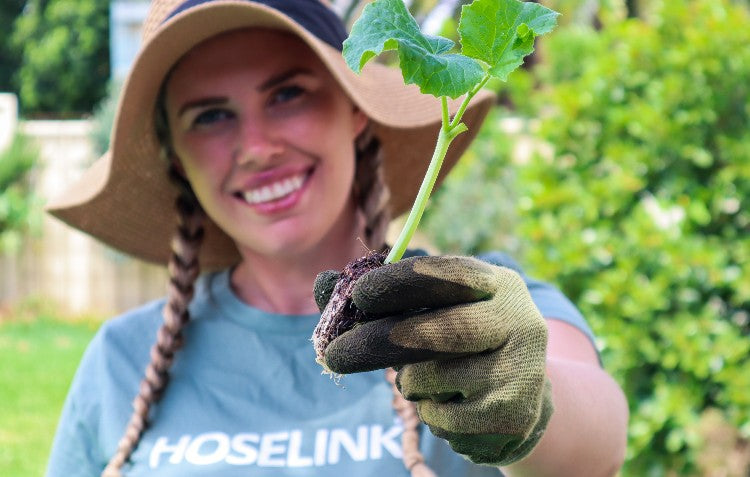
Cherry tomato varieties are great for small space gardens and you can produce a mass of delicious tomatoes on just a single potted plant. Hoselink’s Planter Bags are great for growing tomatoes in and you can easily move them around to get the best light. Cherry tomatoes ripen quickly and are perfect for adding to daily summer salads and platters for entertaining.
Watering
When it comes to watering, tomatoes like consistency. Regular watering once or twice a week (more regularly if it is hot and dry) can be easily managed with Hoselink’s Automatic Tap Timer and Weeper Hose. This will provide consistent water to your tomatoes, stopping them from getting stressed in summer with hot, dry periods. 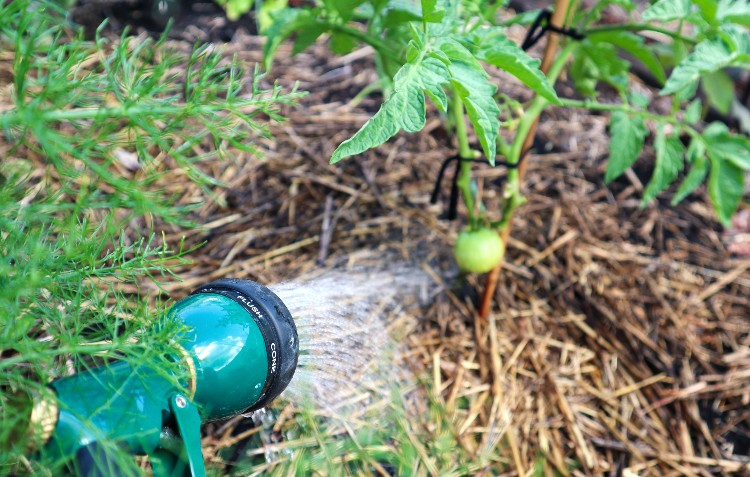
Although tomatoes are easy to grow, they can be sensitive to diseases. It is important to keep any water and soil-borne bacteria off your tomato plants. This can often happen when water or soil is splashed up on to the plant during high flow watering. Using a weeper hose can be a great idea or, alternatively, the flow control on your Hoselink Hose is perfect for slowing down the flow of water. This flow control allows you to water the base of the plant without splashing soil up its stem.
Mulch and Feed
Mulching your tomato plants can also reduce the risk of soil-borne bacteria bouncing up and landing on your plants. Mulch helps keep the soil protected from the hot summer sun as well as keeping the moisture in. Mulch also helps reduce weeds growing around your tomatoes. Weed-free tomato gardens are important to keep good airflow through your tomatoes and reduce any moisture sitting on the plants.
Tomatoes are heavy feeders so make sure you prepare your soil with lots of nutrient-rich compost and composted manure before planting. When you first plant your seedlings out give them a water with Hoselink’s liquid Seaweed Tonic to give them a boost and to reduce transplant shock.
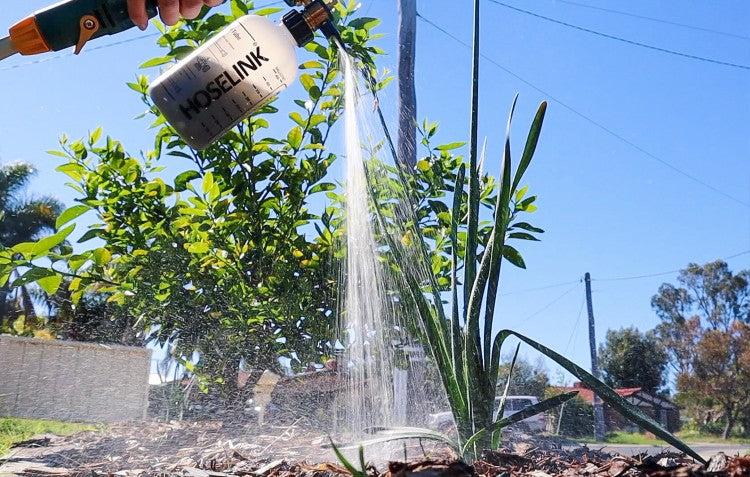
Pruning
Pruning tomatoes can be a good idea to help improve airflow and reduce the risk of soil splashing onto the lower leaves. Remove the bottom leaves that are close to the ground. As the tomato plant grows, continue to remove the lower leaves up to the first set of tomatoes. This will give your tomato a clear, clean base.
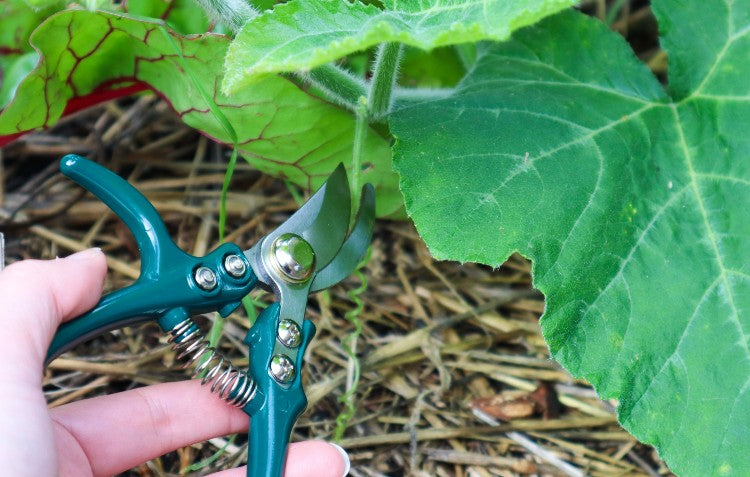
Tomatoes come in two main growth cultivars which describe the nature in which they grow. Determinant and Indeterminate. It is important to understand which type your plant is before you decide to prune the side shoots commonly known as “suckers”.
- Determinant Tomatoes are a shorter, bushy tomato plant. Once the stem produces tomatoes it stops growing so it is best to leave the suckers on. The more stems there are, the more tomatoes you will get from the plant. You can still remove some of the bottom leaves and support the plant as it grows bigger and bushier. Determinate tomatoes generally have a shorter fruiting season.
- Indeterminate Tomatoes have a main leader stem and will continue to grow upright in a climbing manner. These may need staking or additional support to keep growing upright. Indeterminate tomatoes will continue to grow and produce on stems that have previously fruited. They will also send out lots of side shoots and this can make the plant get very messy, heavy and fall over. To keep the plant growing upright and strong, you can remove the side shoots or “suckers”. These are the shoots that appear between the main stem and the leaves. You can choose to keep some side shoots and have multiple main stems. If you do leave some of the side shoots to grow you can also remove them and regrow them into a whole new plant! Suckers that are about 10-15cm tall can be cut and placed in a jar of water to produce roots. Once roots have formed you can plant the cutting back out into the garden and boost your tomato production for free!
- Semi-determinate tomatoes are a bit of a mixed tomato and will grow somewhere in between the heights of determinate and indeterminate. They will also produce fruit a little longer than determinate but not as long as indeterminate tomato plants.
Trellis and Support
As noted above, you may need to support the growth of your tomato plant depending on the nature in which they grow. Stakes and ties can help keep your plants growing upright without them falling over from the weight of the tomatoes. Tomato cages or trellises can also be used to support the growth of your tomatoes. Be aware that indeterminate or climbing tomatoes can grow to over 6ft tall, so ensure your trellis is strong and tall enough to support them properly. Tomatoes will grow quickly, so it is important to check your tomatoes a few times a week to add more ties and to pinch the suckers out.
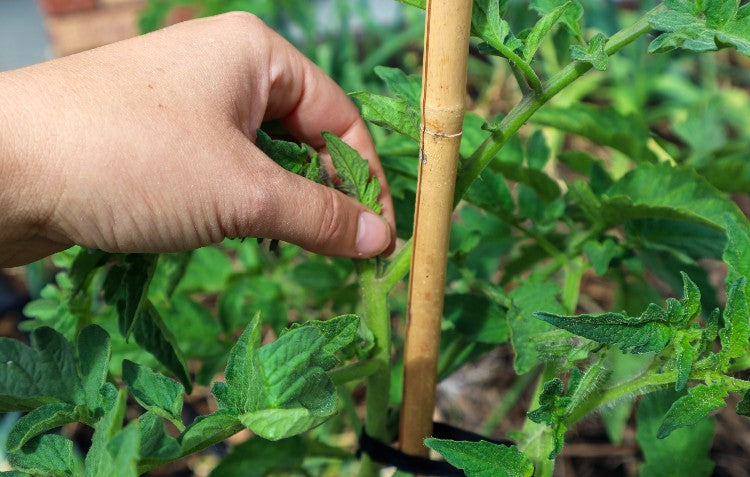
Companion Planting
Diversity in plants is just how nature likes to grow. By planting some companion plants that support the growth of your tomatoes you can boost their health, production and flavour. Creating a healthy ecosystem in your garden will allow both your plants and beneficial insects to thrive.
Basil - Not only a great cooking combo, tomatoes and basil are also great growing companions. Basil can ward off pests and is also known to improve the flavour of your tomatoes. Basil is a prolific flowerer so will attract lots of pollinators to improve the success of your tomato production.
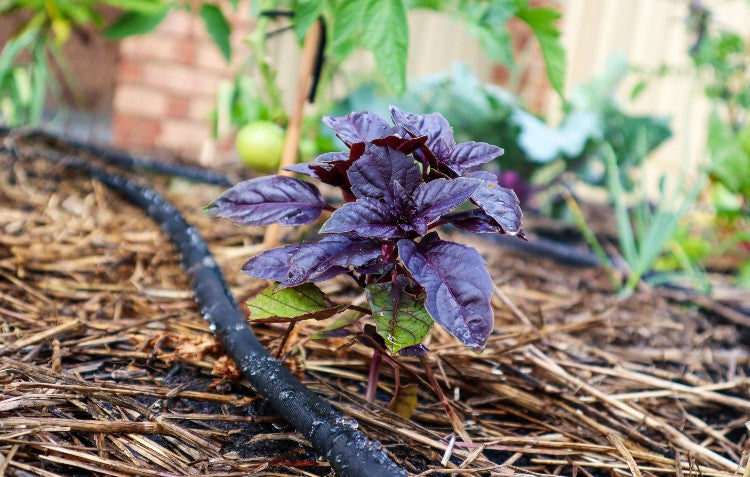
Marigold - Marigolds are great for repelling pests and attracting pollinators to your garden. They also grow low to the ground, which doesn't interfere with airflow too much.
Garlic - Garlic can be a great companion plant for tomatoes. It doesn't take up much space and will help with natural pest management.
Borage - Borage is a powerhouse for attracting pollinators to your garden. The blue and purple flowers often draw the Australian blue banded bee. The blue banded bee has a specific vibrating ‘buzz’ that is perfect for pollinating tomato flowers.
Harvesting
It is important to keep up with harvesting your tomatoes. Any over ripe tomatoes on the ground will attract unwanted pests. Picking your tomatoes regularly may also help boost the amount of production. The aim of your tomato plant is to reproduce. It does this by producing fruit and, therefore, seeds. If you are continuously picking the fruit, the plant will try harder to keep producing.
If you are due to have lots of rain, it is important to harvest all of your ripe and semi-ripe tomatoes. Large downpours of rain will cause big splits in your tomatoes, allowing bugs and bacteria to get in.
Preserving your harvest
Tomatoes are summer on a plate! Producing juicy, hydrating food just when we need it most. If you grow lots of tomatoes, you can preserve them to use later in the year. Preserves also make great gifts for your friends and family.

Ways to preserve your tomato harvest:
-
Freezing - The easiest way to preserve your tomatoes is to freeze them whole. Wash them and place in the freezer to use for future soups, stews and sauces
-
Cook your tomatoes in a chutney and relish
-
Make a tomato sauce or passata
-
Sun-dry your tomatoes
-
Make a frozen tomato paste ideal for pasta sauces and pizza
Tomatoes are one of my favourite things to grow over spring and summer. Freshly picked tomatoes with basil on toast is such an easy, delicious and nutritious breakfast. Each year I try new varieties and save the seeds from the best ones. Saving seeds from your most successful or best tasting tomatoes means you can grow them again next season. Saving seeds is a great step towards creating a thriving and sustainable edible garden.









